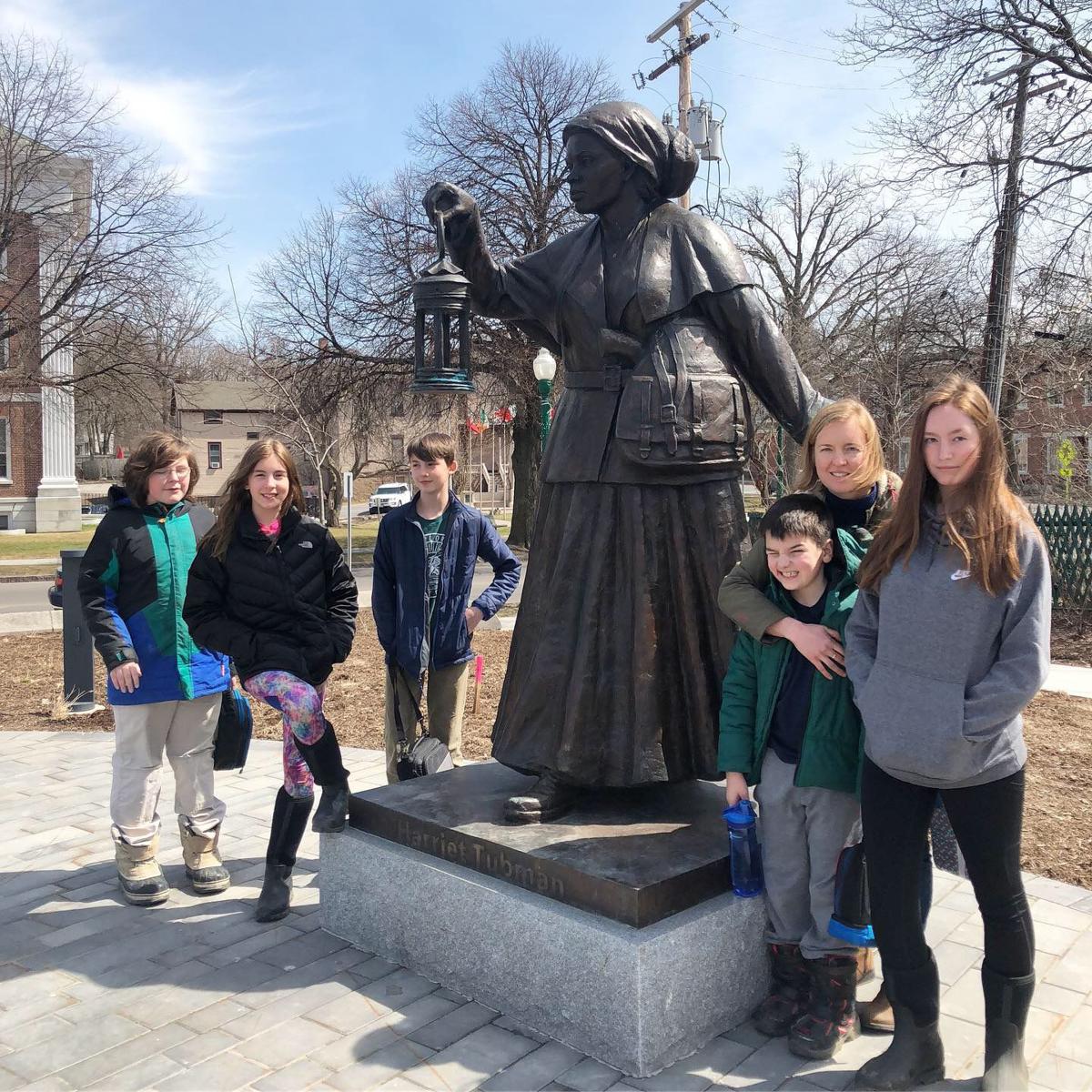 |
| Students visit the Harriet Tubman statue outside the Equal Rights Heritage Center in Auburn, NY |
Themed history months are a mixed bag. In an ideal world we’d all be teaching a diverse and balanced human history and there would be no need to focus on a particular race, culture, or gender for one month out of 12. That said, the reality of our country and our classrooms is not ideal, so themed history months remind everyone to dig a little deeper and go beyond the white, male, colonist worldview perspective. When done right, Black History Month is an opportunity to celebrate the positive contributions and accomplishments that black people have made in the United States and throughout the world.
When we teach black history to children we should start with icons who have positively shaped our culture. It is easy to focus on civil rights leaders, and they are obviously important, but young children also need to see the faces of black poets, musicians, scientists, doctors, mathematicians, artists, inventors, and more. Representation matters. Young black children deserve to be presented with a fair and equitable worldview where possibilities are limitless. Young white children (and especially those who grow up in predominantly white towns in Upstate New York) need to see that talent and hard work come in all colors. They need to know at their core that skin color is just a pigment and race is a social construct.
As children grow this idealized representation of race, while true, is no longer enough. There comes a time when our US history lessons need to include a hard look at systems of oppression. Students need to understand that for every historic icon there were countless other people who possessed the same intellect, ability, and drive, but who lacked access to the social and financial capital needed to succeed. We cannot let our children grow up mistakenly thinking that a lack of representation has anything to do inherent value or potential. We have to show them how oppressive systems predetermine who will have an open path and who will be met with repeated obstacles along the way. It is critical that they understand power dynamics so that wherever they land on the spectrum they’ll understand what’s required to move toward a more equitable future. Students who understand oppression become adults who know why Black Lives Matter, why we need to Say Her Name, and why Colin Kaepernick took a knee. They understand the nuances of power and privilege and they learn to listen to and trust the voices of those who are brave enough to shine a light on injustice.
This February I hope that all educators will seize the opportunity to celebrate the accomplishments of black Americans while simultaneously making a plan to continue to incorporate a diverse array of perspectives throughout the rest of the year.

Comments
Post a Comment